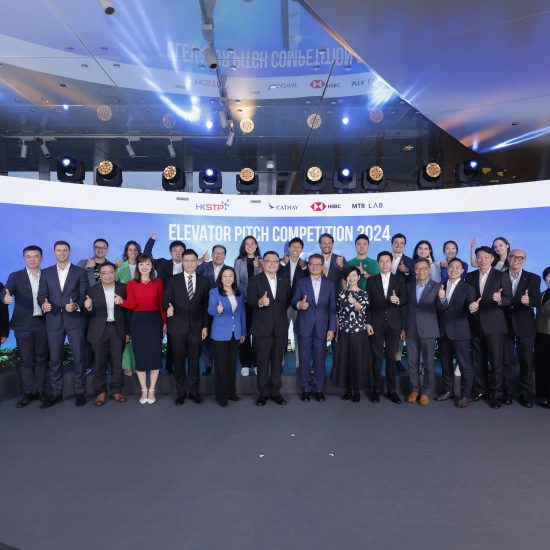|By Dr Xiaoxi He, Technology Analyst, IDTechEx| Many interests have been raised within the battery business in 2015 through a number of activities: the launch of Tesla’s Powerwall with low prices supported by the capability of Gigafactory, Apple’s patent relating to charging and managing power in a device with solid-state batteries, LG Chem’s opening of a mega battery plant in Nanjing, Bosch’s purchase of polymer solid-state battery companySeeo, etc. Not to mention the tremendous number of investment, acquisitions, partnerships and joint ventures.
At the same time, new battery technologies are appearing continuously with descriptions like “doubled performance”, “charged in a few minutes”, “cost reduction of more than 70%”, making the public even confused about the real breakthroughs. This article will discuss the emerging technologies, new opportunities and potential markets in the battery industry.
Opportunities can be found from different dimensions
Since the first introduction by Sony in the 1990s, lithium-ion batteries have become one of the most familiar and common battery technologies in our life. The involving technologies are relatively mature and the facilities are in place. With the expansion of existing manufacturing plants by battery giants such as Samsung SDI, LG Chem and Panasonic, economy of scale will be further achieved.However, with so many advantages, the improvement of lithium-ion batteries is slow compared with other electronic components, both in terms of performance and cost reduction. The liquid electrolyte used in the traditional lithium-ion batteries may cause serious safety concerns. On the other hand, with the development of wearable devices, printed electronics, Internet of Things (IoT), roboticsand electric vehicles, batteries with more features, more powerful performances and lower costs are required. Those factors havemotivated players to find bigger opportunities.
Therefore, the battery industry is explored based on a number of different dimensions. Interests have been aroused in:
Ø Thin-film batteries (based on thickness)
Ø Micro-batteries and large-area batteries (based on size)
Ø Flexible batteries (based on mechanical properties)
Ø Special-shape batteries (based on form factors)
Ø Printed batteries (based on manufacturing methods)
Ø Solid-state, lithium anode, silicon anode batteries (based on technologies)
Ø Energy storage system (ESS) and electric vehicle (EV) applications (based on applications)
All the areas listed above indicate new opportunities. Those areas may be influenced by each other and may have some overlap. For instance, batteries with better technologies may be used in ESS and EV applications, providing better safety and better performance. A thin-film battery is also flexible, and can be made by printing, or based on all solid-state components, or be very small. Market growth of these areas is affected by the costs. Except the last one (ESS and EV applications), the others are also limited significantly by technology maturity. The IDTechEx Research report “Flexible, Printed and Thin Film Batteries 2016-2026: Technologies, Markets, Players” focuses on the first 4 areas as well as solid-state batteries with these features.
Further cost reduction may not rely on technology improvement
Battery technology improvement is based on electrochemical restriction and it is difficult to have sudden significant breakthroughs. In addition, a practical battery is a combination of many considerations including, but not limited to, energy density, power density, lifetime, safety and cost. Many press releases may emphasis one or several improvements but avoid talking about the others. Most existing commercial batteries are already based on relatively mature, proven technologies, but some of them are not well-known.Examples include thin-film solid-state batteries and printed batteries. As the battery development is a long and difficult process, future battery cost reduction are mainly rely on economy of scale, little on technology improvement.
Regulations and policies play a significant role in large deployment
In May 2013 the German market incentive program for battery storage systems was introduced which changed the residential battery installation structure immediately, with 2,700 installations to enjoy the incentives in 2013, jumping to 13,100 by 2015. Also, China’s decision to remove subsidies for nickel manganese cobalt (NMC) batteries for electric buses also crucially influenced this industry. It indicated that for ESS or EV applications, self-sustainability has not been fully achieved and therefore policy changes can affect themgreatly.
Batteries with new technologies will be tried in small gadgets first
Large devices or systems generally require high reliability and safety. Therefore, new battery technologies will tend not to be applied in them initially or in short-term period. Toyota, for example said in January of 2014 that it was working on solid-state battery technologies for cars, but the firm did not expect to have a product within a decade.
Apple also paid lots of attention in solid-state batteries, but it is focusing on portable electronics /wearables /MEMs applications. As early as 2013, the US Patent & Trademark Office already published a patent application from Apple that revealed charging techniques for solid-state batteries. In early 2014, Apple bought all the patents from Infinite Power Solutions after it stopped trading, a company previous working on solid-state thin-film batteries. In November 2015, Apple published another patent related to thin-film solid-state batteries.
In solid-state lithium ion batteries, both the electrodes and the electrolyte are solid-state. Solid-state electrolyte normally behaves as the separator as well. It is safer, especially for those with inorganic solid electrolyte (all organic electrolytes are flammable, no matter whether solid or liquid). Solid-state electrolytes allow scaling due to the elimination of certain components (e.g. separator and casing). Therefore, they can potentially be made with a higher energy density. In addition, they are more resistant to changes in temperature and physical damages occurred during usage. Therefore they can handle more charge/discharge cycles before degradation, promising a longer life time. Due to the flexibility of the casing and without the limitation of liquid electrolyte, solid-state batteries can be made into different form factors, sizes and shapes.
However, the ionic conductivities of solid-state batteries at room temperatures are generally low. In addition, they usually have high internal resistance due to the unstable solid electrolyte interface (SEI). Most solid-state batteries suffer from low C-rate and may notbe able work at room temperature. Examples include 3000 taxis in France with solid-state batteries working at elevated temperatures.Also, solid-state batteries are much more expensive. The current low C-rate, low power makes them suitable to be applied in small devices earlier.
Thinness, flexibility and printed possibility will be the most addressed features
As new battery technologies will be applied in small electronic gadgets first, new features beyond traditional capabilities such as thinness, flexibility and printed Possibility will be addressed. According to IDTechEx Research in the report “Flexible, Printed and Thin Film Batteries 2016-2026: Technologies, Markets, Players”, there are other technologies that can make thin, flexible and printed batteries besides solid-state batteries, such as printed carbon zinc batteries and thin lithium-ion pouch batteries.







